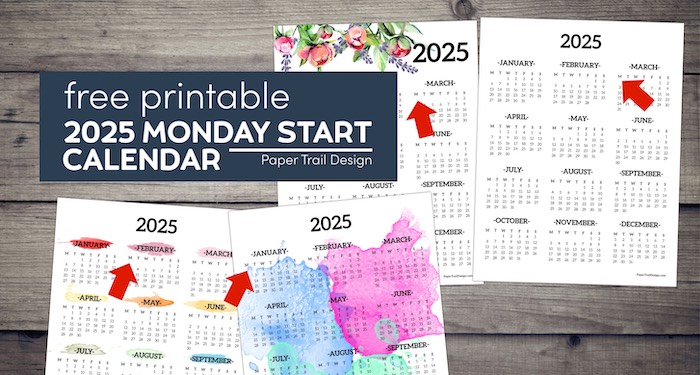iStock is a popular platform for photographers, illustrators, and videographers to showcase and sell their creative work. To ensure the quality and consistency of content, iStock has established specific content guidelines. Understanding these guidelines will help you successfully contribute your work to the platform and reach a wider audience of potential buyers.
Understanding iStock’s Content Standards

Before uploading your work to iStock, it is crucial to familiarize yourself with their content standards. These standards are designed to preserve the quality of the platform and protect both creators and consumers. iStock looks for high-resolution images, clear audio quality, and well-edited videos that meet professional criteria. All submissions must be original, meaning they should not infringe on copyrights or trademarks. Additionally, any people featured in your content should provide model releases, and any property should have property releases to avoid legal issues.
Furthermore, content should adhere to diversity and inclusivity standards, avoiding stereotypes or negative depictions. iStock encourages contributors to submit work that reflects a wide range of cultures and experiences, promoting positive representation in all aspects. Regularly reviewing iStock‘s updated guidelines can give you insight into current trends and demands from buyers, ensuring that your submissions remain relevant and appealing.
Types of Content You Can Upload to iStock
iStock accepts various types of content, catering to a broad range of creative talents. Here are the main categories you can upload:
- Photography: High-quality images capturing diverse subjects, styles, and themes.
- Illustrations: Original artwork, drawings, and digital creations suitable for diverse uses.
- Vectors: Scalable graphics that can be resized without losing quality, great for logos and designs.
- Videos: Short clips that are well-edited and cover various themes, such as lifestyle, nature, and technology.
- Audio: Original music and sound effects that can enhance multimedia projects.
By diversifying the types of content you upload, you can increase your chances of reaching different audiences and fulfilling the varying needs of buyers on the iStock platform.
Quality Requirements for Uploaded Content
When it comes to uploading your work to iStock, meeting the quality requirements is crucial. Contributors must ensure their content stands out and adheres to specific standards that make it suitable for a broad audience. Here are some key quality benchmarks to keep in mind:
- Technical Proficiency: Your images and videos should reflect excellent technical skills. Pay special attention to lighting, composition, and focus. Blurry or poorly lit images may be rejected.
- Creativity and Originality: Unique perspectives and concepts are highly valued. Aim to offer something fresh and innovative that highlights your individual style.
- Relevance and Marketability: Consider the needs of potential buyers. Your content should resonate with current trends and market demands, ensuring that it serves a purpose in various projects.
- Model and Property Releases: If your work includes identifiable people or private properties, make sure you have the proper releases in place. This not only protects you but also adds value to your submission.
- Post-Production Quality: While editing can elevate your work, be mindful not to over-process your images. Maintaining a natural look can often be more appealing to buyers.
Before submitting your content, take a moment to review these guidelines thoroughly. High-quality submissions will not only improve your acceptance rate but also enhance your visibility on the platform.
Technical Specifications for Images and Videos
Understanding the technical specifications for uploading images and videos to iStock is essential for a seamless contributor experience. Each type of media has its set of requirements that you need to meet. Here’s a breakdown:
Images:
- File Format: JPEG is the preferred format for images. Ensure that you’re saving your files in this format before uploading.
- Minimum Resolution: Images must have a minimum resolution of 1,600 pixels on the shortest side. Higher resolutions are encouraged for greater versatility.
- Color Profile: Use the RGB color mode for your images. This ensures a consistent and vibrant representation of colors on digital platforms.
Videos:
- File Format: iStock accepts video files in MP4 format, utilizing H.264 codec for maximum compatibility and efficiency.
- Frame Rate: Aim for a frame rate of 30 frames per second. This rate provides smooth, professional-quality playback.
- Resolution: The preferred dimensions are at least 1920 x 1080 pixels (HD), as this aligns with industry standards for high-quality visuals.
By adhering to these technical specifications, you’ll streamline the uploading process and improve your chances of approval. Always check your files before submission to ensure they meet these essential guidelines!
Legal Considerations When Uploading Your Content
When you’re ready to upload your work to iStock, it’s essential to be aware of the legal considerations that can affect your content. The last thing you want is to run into issues with copyright or licensing down the road. Here’s a quick rundown of the key points:
- Copyright: Ensure that you own the rights to your images, videos, or audio files. If you’re working with any third-party materials, make sure you have the necessary permissions to use them.
- Model Releases: If your work features identifiable people, you must obtain a model release. This document gives you the legal right to use their likeness in a commercial context.
- Property Releases: For any images or videos showcasing private property, a property release is crucial. This legal agreement allows you to use the property without any potential disputes.
- Trademarks: Be cautious with any logos, branded products, or trademarked items appearing in your work. These may require additional permissions to avoid infringement.
- Public Domain and Creative Commons: If you’re considering using content that is in the public domain or under a Creative Commons license, read the specific terms of use to ensure compliance.
Understanding these legal aspects will help protect you and your work as you contribute to iStock. Taking the time to check these boxes can save you a lot of headaches later on!
Tips for Creating High-Quality Content
Creating high-quality content is vital for standing out on iStock. Here are some practical tips to help you produce work that not only meets iStock’s guidelines but also captivates audiences:
- Focus on Composition: Strong composition is key. Use the rule of thirds, leading lines, and framing to guide the viewer’s eye and create visual interest.
- Lighting Matters: Good lighting can make or break your work. Natural light or soft artificial lighting can enhance the appeal. Avoid harsh shadows and overly bright highlights.
- Sharpness and Clarity: Ensure your images are sharp and clear. Use a tripod for stability and consider higher resolutions for optimal quality.
- Edit Thoughtfully: Use editing software to enhance your work, but avoid over-processing. Subtle adjustments can elevate your content without making it look unnatural.
- Tell a Story: Engaging content often tells a story. Whether it’s a series of images or a video, think about the message you want to convey and structure your work accordingly.
By following these tips, you can produce high-quality content that resonates with viewers and meets iStock’s standards. Remember, the more effort you put into your creations, the more likely they are to stand out in a crowded marketplace!
Navigating iStock’s Approval Process
Getting your content approved on iStock can feel like a maze at first, but it’s simpler than it seems. Understanding the approval process is the key to successfully showcasing your work on this platform. Here’s a step-by-step breakdown to help you navigate through the process:
- Submission: Once you’ve uploaded your images, videos, or illustrations, they go through an initial review. Ensure that your files meet the technical requirements specified by iStock. High quality is crucial here!
- Review: Your submission will be evaluated by iStock’s team of reviewers. They will check for adherence to the platform’s guidelines, including quality, relevancy, and originality.
- Status Updates: You can keep track of your submission’s status through your contributor dashboard. You’ll see if it’s under review, accepted, or rejected. Stay patient—the review process can take anywhere from a few hours to several days depending on their workload.
- Feedback: If your content is rejected, you’ll receive insights into why it didn’t make the cut. This feedback is invaluable! Use it to improve your future submissions.
- Resubmission: If your content was rejected for a specific reason, make the necessary changes and resubmit. This shows iStock that you’re committed to producing quality work.
Pro tip: Familiarize yourself with iStock’s guidelines beforehand, and incorporate the feedback from any previous rejections to boost your chances of success!
Common Reasons for Rejection of Submissions
Unfortunately, not all submissions make it through iStock’s approval gate. Understanding the common reasons for rejection can help you avoid pitfalls and create a higher standard of work. Here are some prevalent reasons why submissions get turned away:
- Technical Issues: Poor resolution, incorrect file format, or no metadata can lead to rejection. Ensure your files meet all technical specifications.
- Quality Concerns: Images with noise, grain, blurriness, or poor composition often don’t meet iStock’s quality standards. Always aim for high-quality visuals!
- Lack of Originality: iStock values unique concepts. If your submission feels too similar to existing images or looks like stock clichés, it will likely be rejected.
- Irrelevant Content: Ensure that your work aligns with current trends and customer needs. Content that doesn’t serve market demand may not get approved.
- Licensing Issues: Make sure your images don’t infringe on copyrights. This includes logos, trademarks, and identifiable people without releases. If you’re not clear about the use of an element, it’s best to leave it out!
Remember, learning from each submission is part of the journey! Take the feedback seriously, refine your skills, and keep creating. Your next upload could be the one that gets you accepted!
Maintaining Compliance with iStock Guidelines
When it comes to uploading your work to iStock, compliance with their guidelines is crucial for both your success as a contributor and for maintaining the quality of the platform. Understanding and adhering to these guidelines not only helps to ensure that your content gets accepted but also minimizes the chances of it being removed later on.
Here are some key points to keep in mind:
- Content Quality: Your uploads should meet high standards in terms of resolution, clarity, and overall composition. Make sure to conduct thorough checks for any blurriness or artifacts.
- Model Releases: If your work features identifiable individuals, you must obtain model releases. This document grants you the right to use their image commercially.
- Property Releases: Similarly, when your content includes recognizable properties (like buildings, artwork, or branded items), ensure you have the necessary property releases.
- Original Work: All submitted content must be your original creation. Be ready to prove ownership if questioned by iStock.
- Keyword and Title Accuracy: Use relevant, accurate keywords and titles that genuinely reflect what your content depicts. Misleading metadata can lead to rejections.
- Copyright Compliance: Make sure your content doesn’t infringe on others’ copyright. Avoid using elements that belong to someone else without permission.
By taking these steps, you’ll not only protect your work but also enhance your reputation as a reliable contributor on iStock. Always stay updated with any changes in guidelines to ensure ongoing compliance.
Final Thoughts on Uploading Content to iStock
As you prepare to upload your work to iStock, it’s essential to approach the process with a strategic mindset. Uploading content isn’t just about quantity; it’s about quality and relevance to the marketplace.
Here are some final takeaways:
- Understand Your Audience: Knowing what buyers are looking for helps you create more appealing content. Research trending topics and check out bestsellers to get inspired!
- Diversity in Your Portfolio: A varied portfolio can attract a wider audience. Consider different styles, themes, and formats to showcase your versatility.
- Stay Organized: Keep track of your uploads, including when and what you’ve submitted. This helps you analyze performance and make informed decisions about future content.
- Engage with the Community: Join forums and groups of iStock contributors. Sharing experiences and advice can be incredibly beneficial as you navigate your journey.
- Iterate and Improve: Don’t get discouraged by rejections. Use feedback to refine your skills and elevate your future submissions.
Ultimately, success on iStock is about persistence and a willingness to learn. By adhering to the guidelines and focusing on quality, your creative works can not only earn recognition but also generate revenue over time. Happy uploading!


